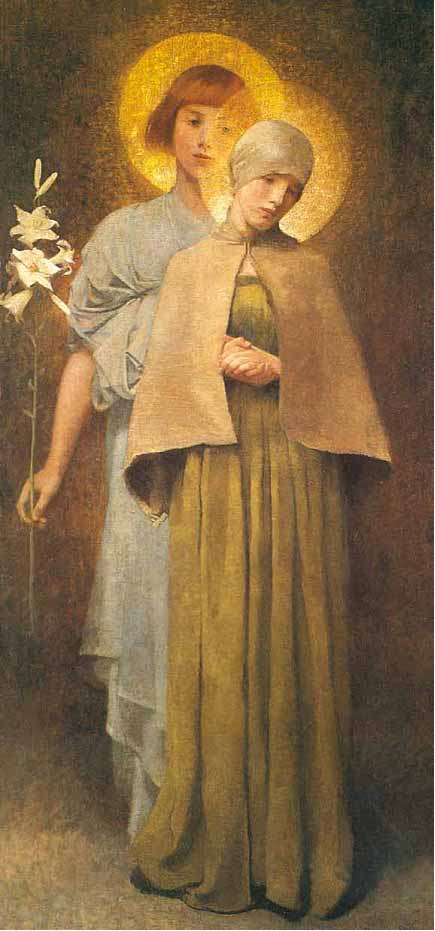Magdalen Evans, independent scholar
The impetus for my research sprang from a dissertation completed at the University of East Anglia twenty years ago, the inspiration of which I had put on hold until I had the chance to organise a touring exhibition, Utmost Fidelity in 2009 which travelled to five UK museums. This was the first occasion where work by the husband and wife painters, Adrian and Marianne Stokes, the latter from Austria, was reunited to be examined by a 21st-century audience. Momentum for the launch of the exhibition at Wolverhampton Art Gallery came from their ownership of Madonna and Child (1905) which is well-known far beyond Marianne’s name thanks in part to its 40 million or so print-run as a first-class Christmas stamp in 2007 not to mention many Christmas cards. The tranquillity of this portrait prompted various observers to cite the principal characteristic of Marianne’s work: namely piety without sentimentality, and I wanted to explore how this translated within her commissioned work and depictions of non-religious sitters.
My ambition was to trace as many portraits of and by both artists and to specifically attempt to examine the place of Marianne’s tempera portraits within the context of the influence of European art colonies and the Arts and Crafts revival in England. I have succeeded in tracing many works hitherto considered lost and aim to find more, possibly with the help of other members of the Understanding British Portraits Expertise database. I realised that little had been published on her significance as a serious interpreter of the English face and pre-eminent amongst the list of significant lost portraits, is that of Elizabeth Garret Anderson MD from 1908, which has been missing for nearly 100 years. My findings showed that she skilfully navigated the demands of individual sitters with her own desire to interpret their faces honestly and unsparingly and even adding in element from her own, rather than their experience. I have shared my research findings with a wide range of museums and galleries, including Wolverhampton Art Gallery, Tate Britain, Nottingham Castle museum and the Whitworth Institute, which plan to incorporate it into new visitor interpretation. I am contributing an article to the Pre-Raphaelite Society US journal, and have been invited to give a lecture at the Art Workers Guild in Bloomsbury.
magdalenevans[at]yahoo.co.uk

